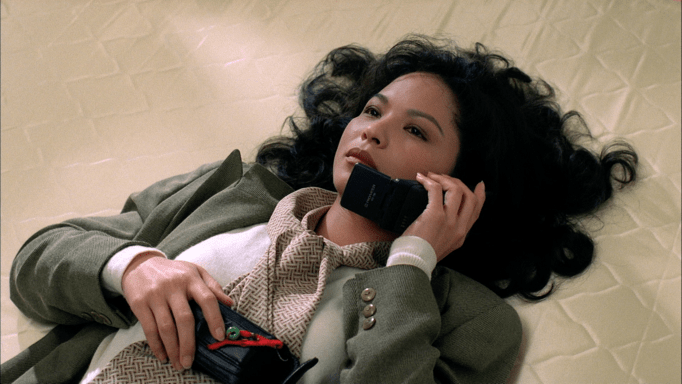Review: ‘Vive L’Amour’ chillingly conveys the ennui of the everyday
The new 2K restoration of Tsai Ming-liang’s second feature-length film “Vive L’Amour” is currently playing at Metrograph. The film follows three lovelorn denizens of Taipei unknowingly sharing the same vacant apartment to escape their daily grind.
The 1994 Taiwanese New Wave film, “Vive L’Amour,” was directed by Tsai Ming-liang and follows the story of three people who unknowingly share an apartment in Taipei. It went on to win three Golden Horse Awards and a Golden Lion award. (Image courtesy of Film Movement)
March 22, 2022
The films of Taiwanese slow cinema pioneer Tsai Ming-liang capture so rigidly the minute motions of the everyday that they border on absurdism. His second film, “Vive L’Amour,” recently restored by Film Movement and currently playing at Metrograph, captures this absurdity at its cruelest.
“Vive L’Amour,” a film whose title translates to “Long Live Love,” follows three depressed citizens of Taipei who share the same vacant apartment to escape their boring everyday routines. As Ming-liang tracks how each of the three individuals uses said empty space to work through their sorrows, he creates a heartbreaking portrait of cold hearts and lost connections.
As expected, the first face we see in “Vive L’Amour” is that of Hsiao-kang (Lee Kang-sheng), who has portrayed variations of the character in all of Ming-liang’s films. In the film’s opening scene, Hsiao-kang notices a key, forgotten by a real estate agent, dangling in its lock. With no one around, he promptly pockets it for future use.
Kang-sheng brings a grim stoicism to Hsiao-kang’s visage. Each step he takes is full of sadness, and by taking one look at his doleful eyes, it’s clear he struggles to find purpose in his day-to-day activities. In a scene that perfectly captures how useless and lost Hsiao-kang feels, Ming-liang has the character trapped in a room full of telephones, trying to decipher which one is ringing. His efforts are to no avail, as a coworker indifferently walks into the room, picks up just one phone and puts an end to the irritating ringing. In that instant, Hsiao-kang is not only rendered useless, but invisible, a feeling he and the rest of the aforementioned trio will continue to combat over the course of the film.
May Lin (Yang Kuei-Mei), the real estate agent who left the key Hsiao-kang picked up, and who uses the same empty apartment for vapid sexual affairs, is also not doing too hot. She works as much as she smokes but has nothing to show for it. Her latest lover, Ah-jung (Chen Chao-jung), is no more than a means of killing time so she does not have to think about how pointless her life has become in idle time.
One could argue that “Vive L’Amour” as a whole — nay, Tsai’s entire filmography — is a composition of idleness. His adherence to sitting with moments in long, uninterrupted still shots wavers between indifferently surveilling the routines of actors or all-too-caringly capturing the lives of characters. This adherence to moments uninterrupted allow Ming-liang to catch the glacially evolving emotions of his actors, which the audience can trace through the unique choreographies of subtle wrinkles and furrows dancing across actors’ faces in “Vive L’Amour.”
“Vive L’Amour” is not a mere three-fold character study, but a blown-up portrait of a soul draped in sorrow that Ming-liang generously decided to make into a movie. It’s a film that shows Ming-liang’s incredible care for the human condition, a beat he continues to explore in his films today. Through Ming-liang, the ebbs and flows of everyday pain unfurl themselves as delicate poems that are prone to leave viewers yearning for a hug or emboldened to go out and hug a friend in need.
The film’s particular concern with the fragile lives of its main trio hammers down the fact that sex and death often share the same sheets. In one of the film’s most infamous scenes, Hsiao-kang is forced to hide underneath the same bed atop which May Lin and her lover are having sex. It’s an unbelievable sequence for a variety of reasons, but its most poignant truth lives in how it manages to collapse a pyramid of tragedies into the same tight frame. In one moment, which Ming-liang naturally stretches with his durational camerawork, Hsiao-kang is uncomfortably stuck gazing upon the excitement of a scene he cannot imagine participating in anytime soon, May Lin is wrapped up in yet another forgettable fling she’ll cry about with a cigarette in hand the following morning, and Ah-jung is unknowingly living out the last moments of a relationship he believed had a future.
Ming-liang knows how to tell a tragedy. He does so with painful precision that comes to life in his excessively slow pacing and ability to show character development through moments of sadness. With “Vive L’Amour,” Ming-liang shows how a void could feel homey to people occupied with killing time. It is in his awardance of time to time-killers that Ming-liang demonstrates a deep care for sunken souls across the world, a care that coldly, and beautifully, bleeds across his second film.
Contact Nicolas Pedrero-Setzer at [email protected].

























































































































































